The opening of the new International Bomber Command Centre in Lincoln seemed like a good opportunity to invite a few Alvis Friends to take a look and do a few Alvis miles. A chance enquiry from David Walters about dealer name plates prompted an invitation to bring David’s Speed 20 along the A46 from Bath to Lincoln.
Furthermore it prompted David to provide some historic pictures of his Speed 20 SB Cross & Ellis tourer.
This is the story of the 25th Speed 20 SB, now registered BOL 229 and in the hands of David Walters since 1969.
James H. Galt, Ltd., 52 Woodlands Road, Glasgow, 30 November 1933 – December 1935. The registration was not issued until Dec 35/Jan 36. It is believed to have been the demonstrator bearing Galt’s plate of AL 2 or similar.
The Guarantee card (“guarantee for 6 months from Jan 1 36”) shows T S Oliver, c/o Messrs M Bywater & Co Ltd, Small Heath, Birmingham. Engine from SC Sp20. 1 January 1935 – 4 April 1938.
[The story of David’s purchase from Ken Frith is included in his article in AOC Bulletin 536 July/August 2012, Page 86 which is on the DVD of Bulletins available to Friends of the AAT]
August 1969. 3889 David Walters
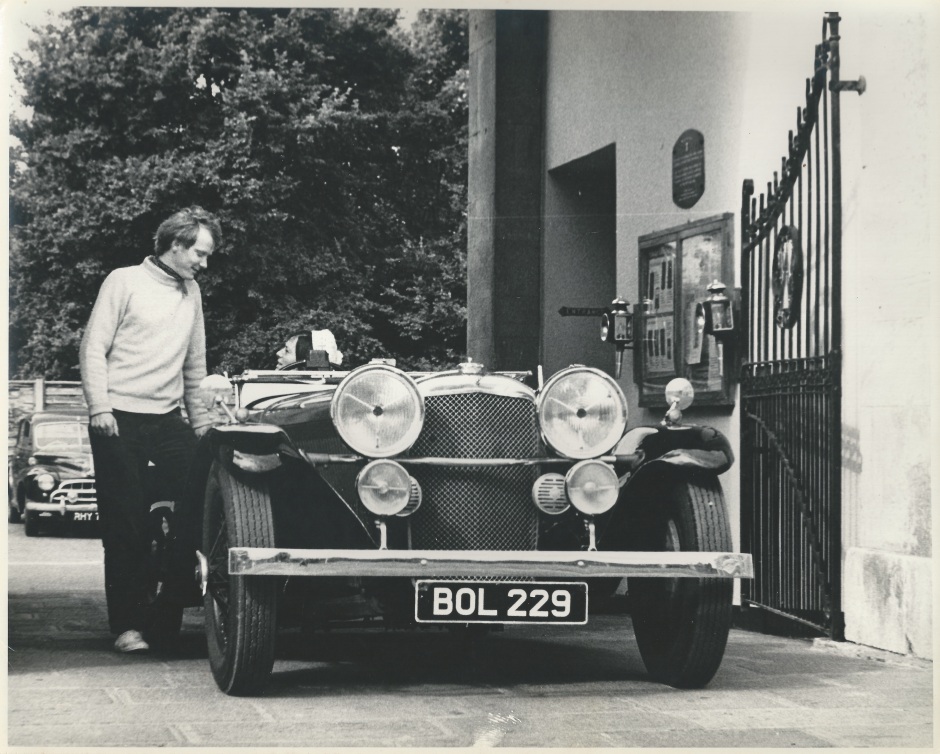
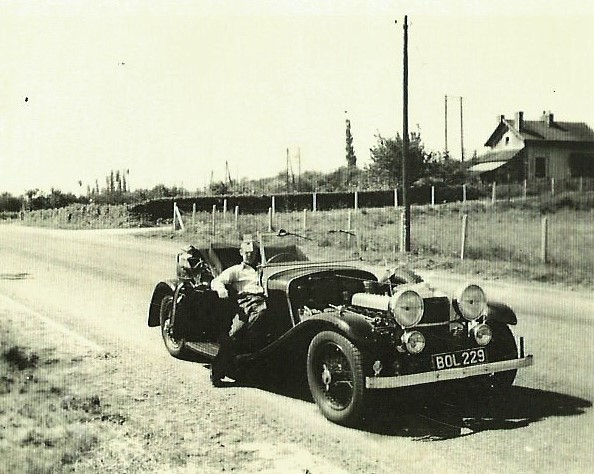
1938…by Eric Thompson.
Living in Cobham, quite close to Brooklands my brother Ray and I had always been interested in motor racing. In 1938, I had as my first car, a ten year old high chassis 2 litre Lagonda while my brother had an Alvis Speed Twenty and having paid 10 shillings for the privilege, he lapped Brooklands at 78 m.p.h. He also had a girlfriend, Toni, who was mad about motor sport and eventually married Peter Gladstone, the constructor of one of the earliest 500 cc racing cars, “Red Biddy”. I had bought my Lagonda from Gerry Crozier who traded as Malloway Motors in a London Mews and who owned a 540K Mercedes (in which as passenger, I exceeded 100 m.p.h. for the first time down Henley Hill with the blower screaming) and also a fantastic LMB Special which was a short chassis 1932 Ford coupe with blown V8 engine, a Bellamy split front axle and canvas bodywork! We sought the advice of Gerry regarding participation in motor sport and he suggested that we should try the Land’s End Trial organised by the Motor Cycle Club. Ray duly joined the Club and with some trepidation, entered the Alvis. Thomson and Taylor gave the car a service and with our starting point at Exeter on the Friday night, Ray, Toni and I left Cobham on the previous afternoon and stayed the night in Blandford.
We arrived at the check point in Exeter in plenty of time and perhaps over-indulged in an excellent dinner at the Rougemont Hotel. Returning to the car, we found that one of the spot lamps had failed and this required frantic action with a soldering iron. We had filled with petrol, oil and water and given the One-Shot lubrication lever which was located above the passenger’s feet, a couple of pumps.
At precisely 11.22 pm, we left Exeter and headed up the A 35 towards Dorchester where we were due to check in at 1.09 am, just 45 miles away. The next check point took us back to Blandford at 2.30 am and then up to Taunton at 4.30 amwhere there was time for a massive breakfast at Deller’s Cafe. The car had behaved faultlessly through the night but the passengers had often fallen asleep, lulled by the resonant bellow of the exhaust from the Burgess straight through silencer — and this had resulted in many excursions down wrong roads.
We left Taunton at 6.22 am in dawn’s early light and 90 minutes later reached the bottom of Pollock Hill. Although not observed, this was our first real test of the car which charged up the lower slopes until before reaching a 1 in 3 hairpin. Ray made a quick change into first, blessing the all-synchromesh gearbox, and the crowd positioned on the corner cheered.
Lynmouth Hill followed shortly after and despite warnings on the Route Card, we went up the hank on the hairpin and had to reverse. At last we reached the first Observed. Section, Station Hill with its 1 in 4 climb between white washed houses and a surface of grit at the bottom and slate slabs at the top. Toni and I sat in the back seat and Ray had no problems in taking the hill at speed. 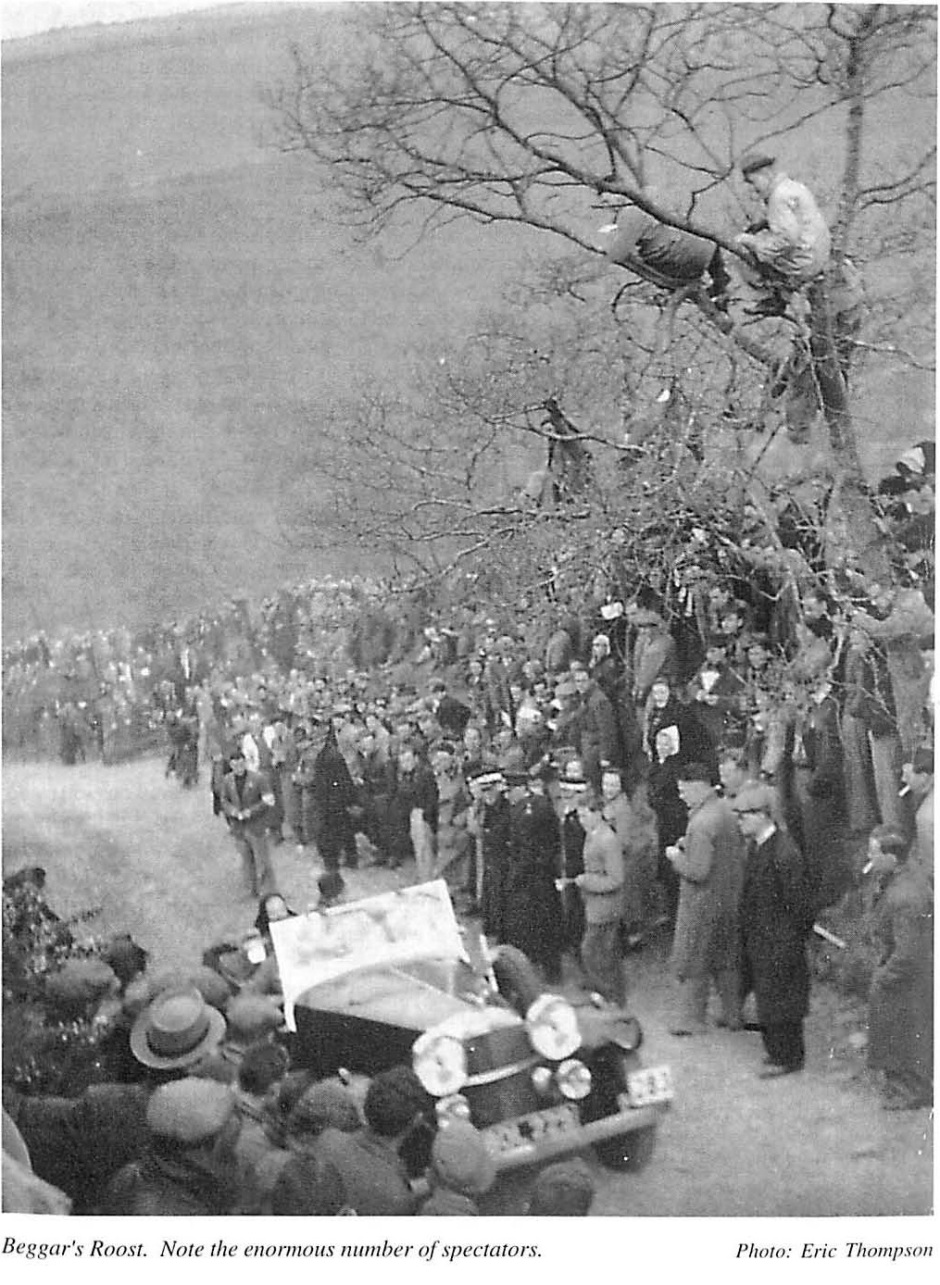 Beggar’s Roost was next and we thought it wise to reduce our tyre pressures to 181bs. This helped to limit wheel spin as we set off on the loose gravel. Three quarters the way up, the revs began to drop and Ray had to slip the clutch to keep motoring and we crept over the summit to cheers from the crowd.
Beggar’s Roost was next and we thought it wise to reduce our tyre pressures to 181bs. This helped to limit wheel spin as we set off on the loose gravel. Three quarters the way up, the revs began to drop and Ray had to slip the clutch to keep motoring and we crept over the summit to cheers from the crowd.
Barton Steep followed immediately and the car coped easily with its 3 second restart half way up. Having no fan, the temperature gauge often went off the clock and we refilled the radiator while waiting at the bottom of Darracot. The start was on a newly laid patch of tarred grit and on the signal, the engine revved and then died as we struck a ridge across the road. We dropped back and took a rush, sailing up in first gear with the engine revving at 3500. At the top, we stopped to oil the carburettor slides suspecting unjustly that they had caused the problem.
By 1.30 pm, we had reached Bude and had time for a hasty lunch. Panic then set in because there was no Cleveland Discol to be found. Reaching Crackington, we crossed a 4″ water splash before the start and possibly because the engine did not like the Esso Ethyl, we failed to get away in the given time but then rushed up, sliding wide on the corner. 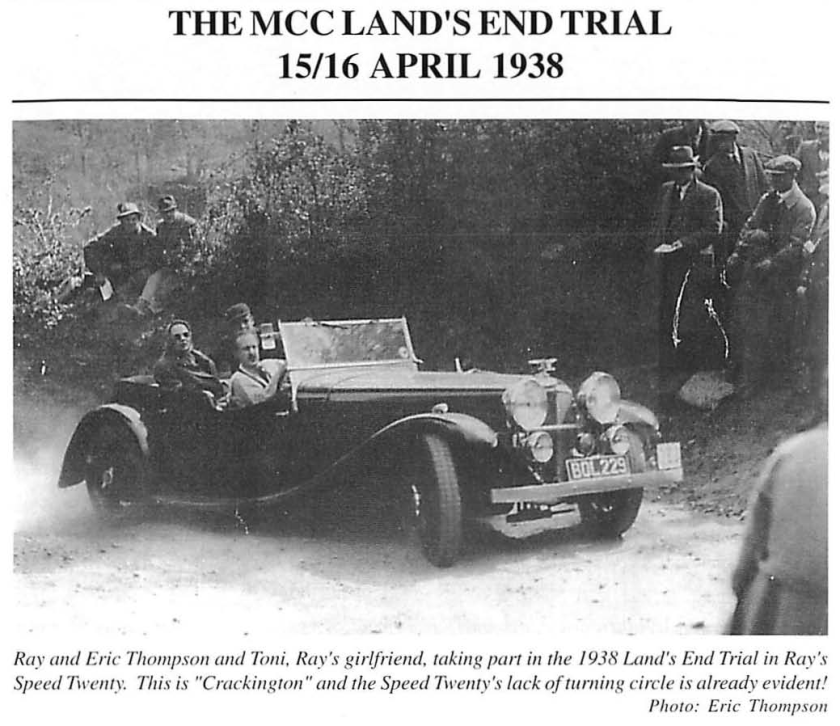 Our hopes of a Premier Award had gone — but then none of us expected one.
Our hopes of a Premier Award had gone — but then none of us expected one.
New Mill came next with its deep water splash, two acute hairpins and steep banks on either side. In crossing the ford, our tail pipe and silencer were knocked off. Toni and I leaped out, trying to disentangle the mess. The Marshalls were getting impatient and Ray moved forward a bit, nearly piercing the petrol tank. At last we removed the silencer and pipe and with full revs and an open exhaust, Ray stormed the first hairpin nearly sliding into the crowd and had to reverse to get round. At the next hairpin, we brushed the rock wall. At the top, we stopped to catch our breath and inexpertly replaced the silencer.
Things were not going too well now and we did not enjoy the prospect of Hustyn with its mud and little stream which had been diverted across the track. The tyres could get no grip and despite bouncing in the back seat, we came to a stop half way up. The towing gang fixed a rope and sorrowfully we were hauled over the top. It was now half past five in the afternoon and we were already an hour late. Having watched car after car fail Bluehills Mine, we decided that the infamous hairpin was too tight for the Alvis and we took the slip road to retire. In Falmouth that night, we discussed the excitements of the previous 24 hours and decided that an Alvis Speed Twenty with its long wheelbase, little ground clearance and poor lock was not the most suitable vehicle for trials and that a light weight spartan Ford V8 would have a better chance. When we got home, Thomson and Taylor refitted the silencer and discovered that at least one of the eight springs which served each valve had broken in every case — their solution, 3 concentric Terrys per valve.
ERIC THOMPSON
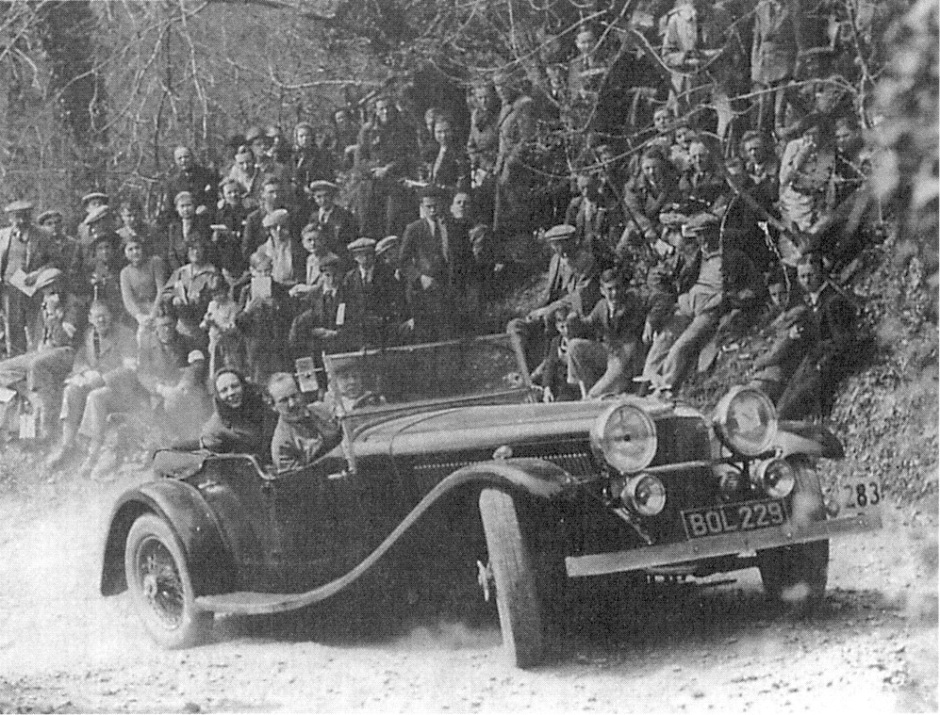
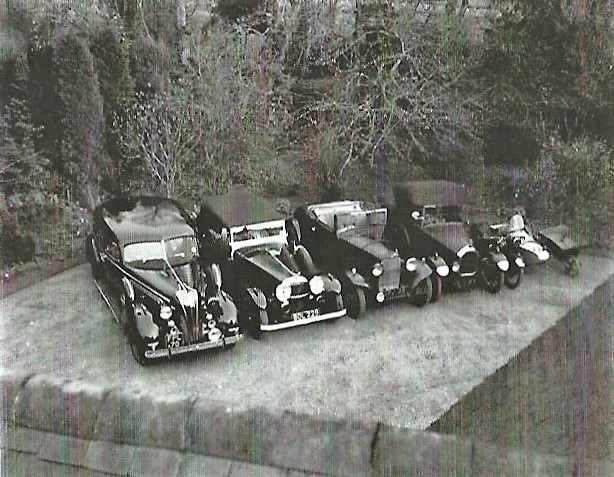
There is a bit of 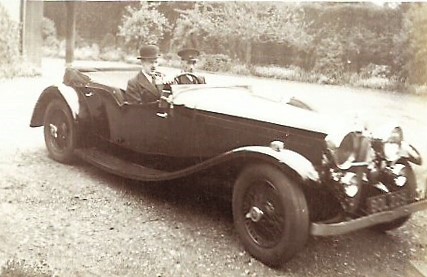 a story to the last photo; Ede, the Thompson family chauffeur is sitting beside Ray Thompson. For some reason the windscreen has been removed. Ray worked in the city and had missed the train. They were about to head it off at the next station. Ede was called up in 1940 and disappeared into the Second World War, never to be heard of again.
a story to the last photo; Ede, the Thompson family chauffeur is sitting beside Ray Thompson. For some reason the windscreen has been removed. Ray worked in the city and had missed the train. They were about to head it off at the next station. Ede was called up in 1940 and disappeared into the Second World War, never to be heard of again.
Cecilia’s father Mr Philip A.Jackson (1907-1984) was a lifelong Alvis enthusiast and owner and an early member of the AOC (977SE). As well as the Silver Eagle and Speed 25 he had a TA21 MXM 991 and Grey Lady saloon KRD 9
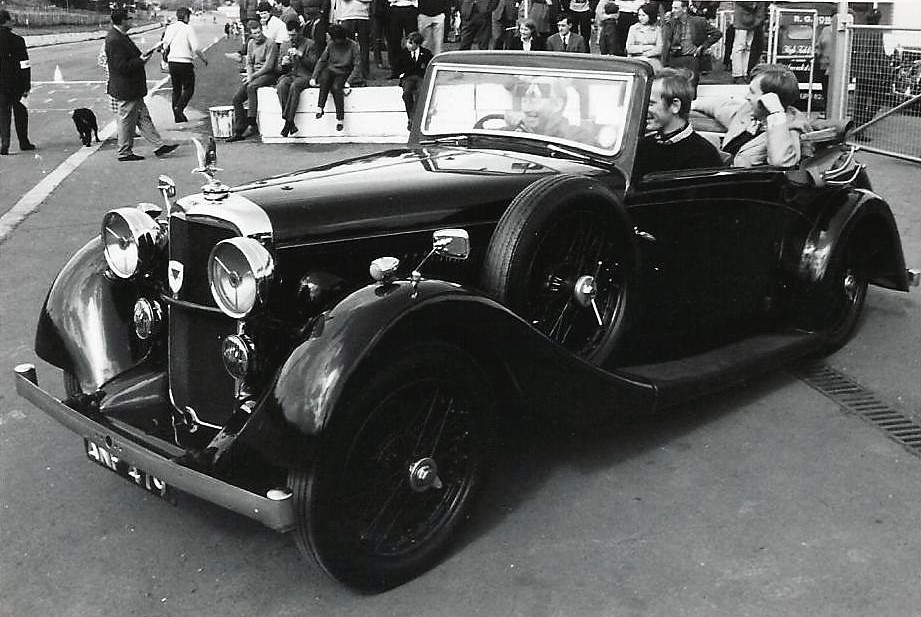
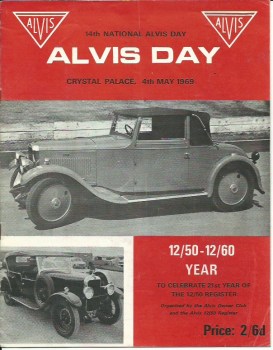

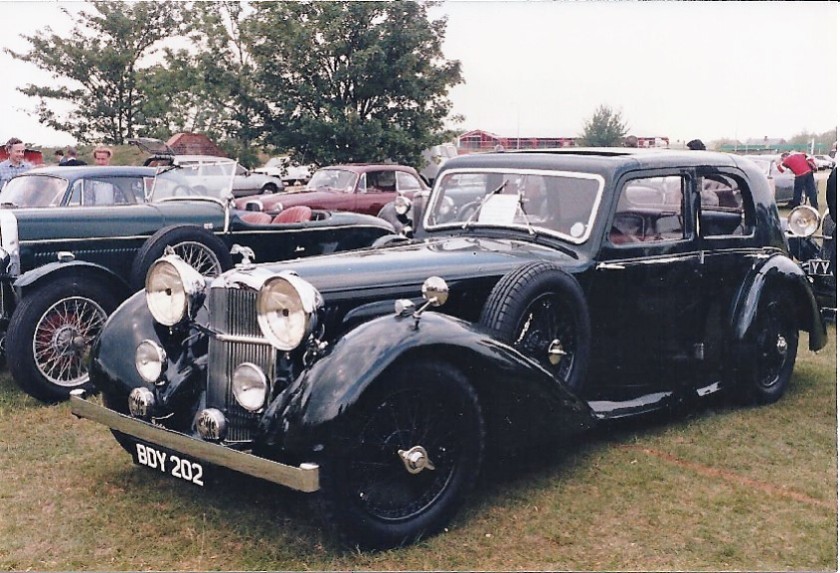


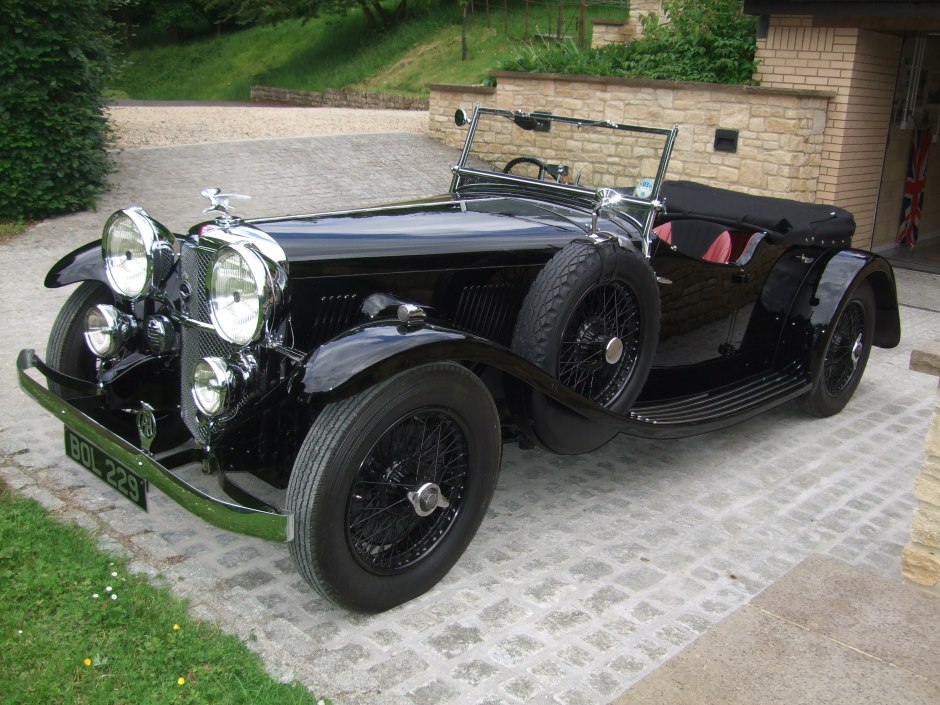

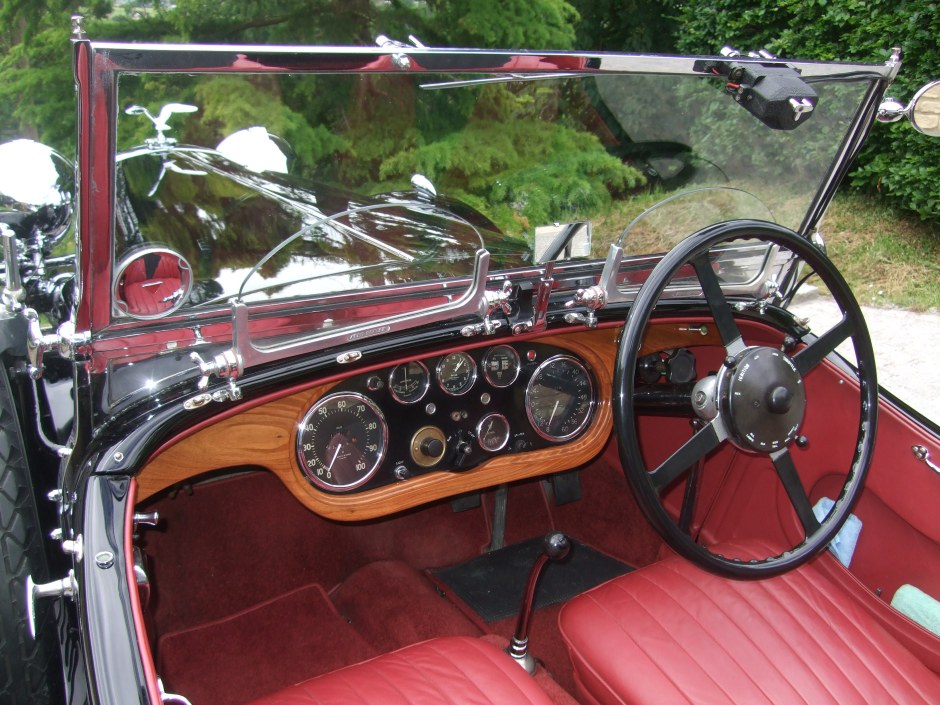


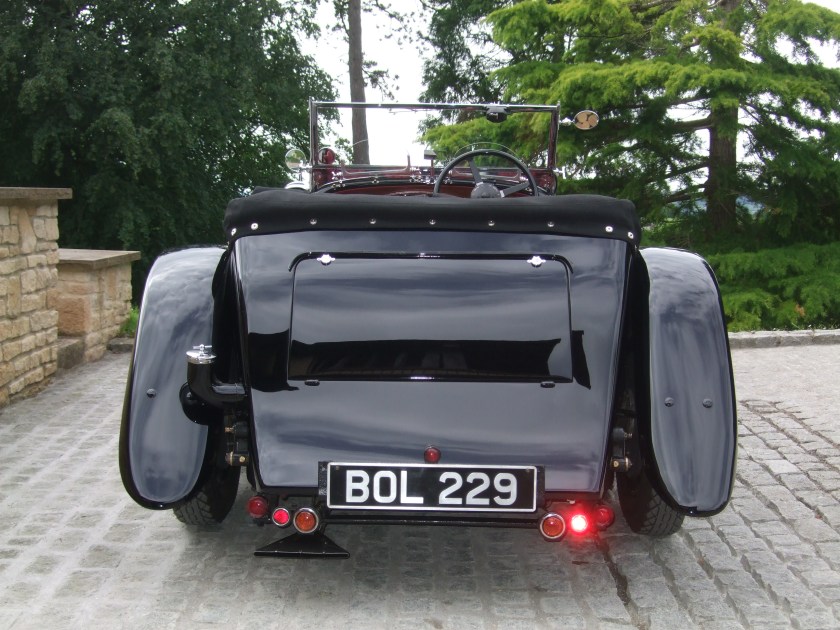
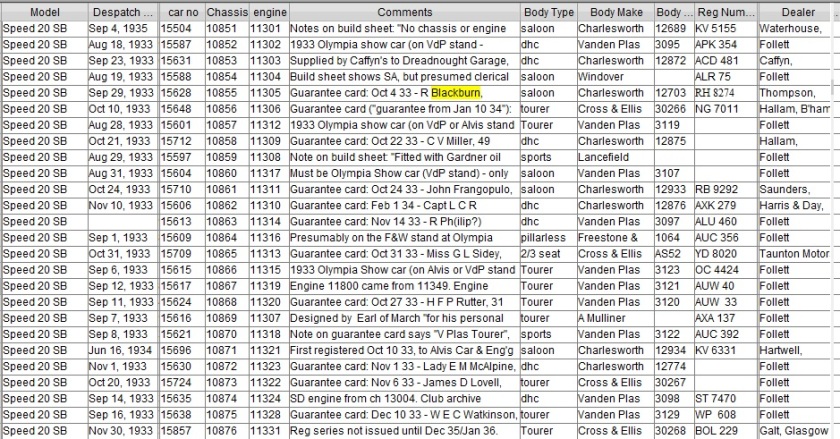 The register of early SBs which shows the first delivery of the new model went to one Robert Blackburn of Bowcliffe Hall, replacing his SA saloon.
The register of early SBs which shows the first delivery of the new model went to one Robert Blackburn of Bowcliffe Hall, replacing his SA saloon.

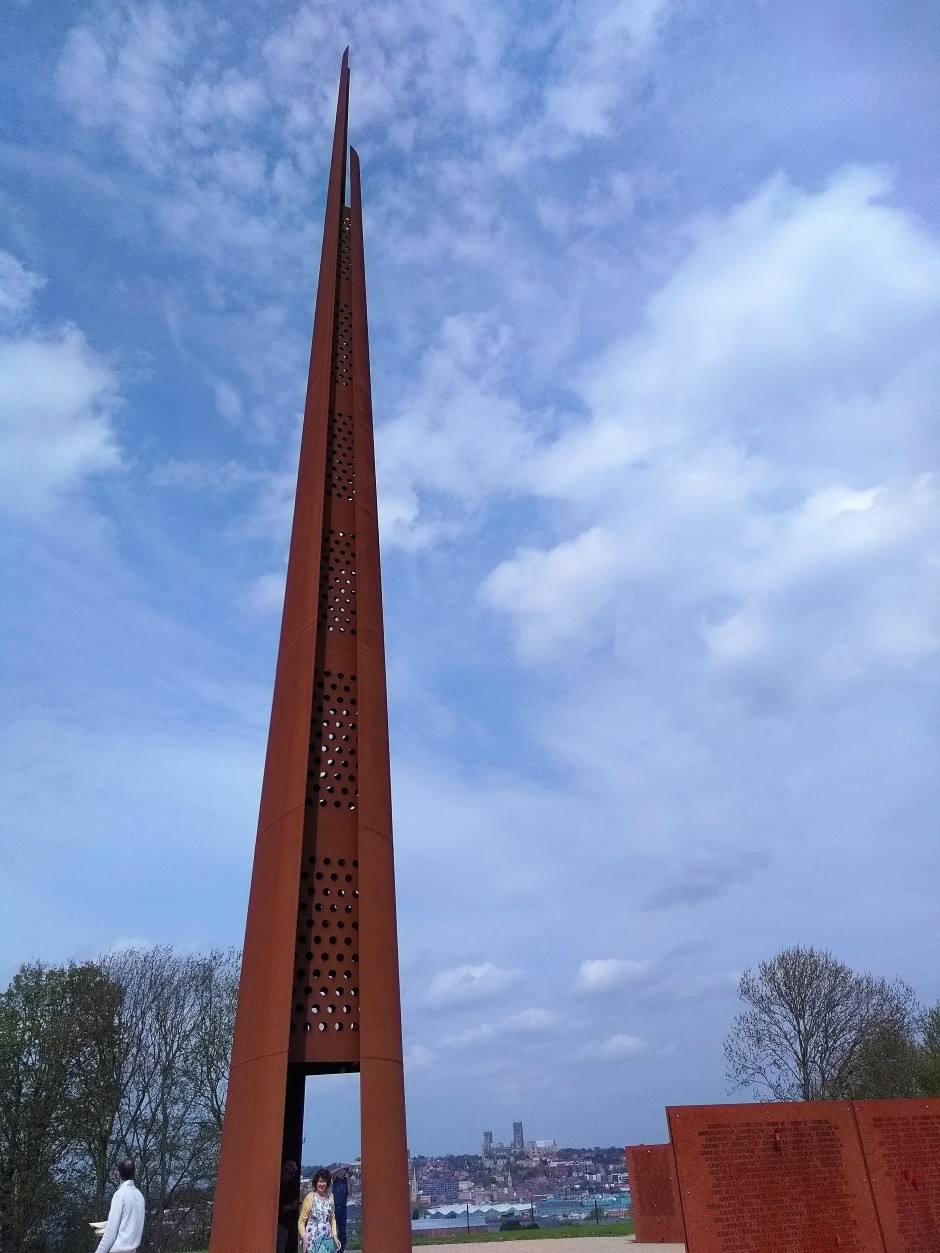
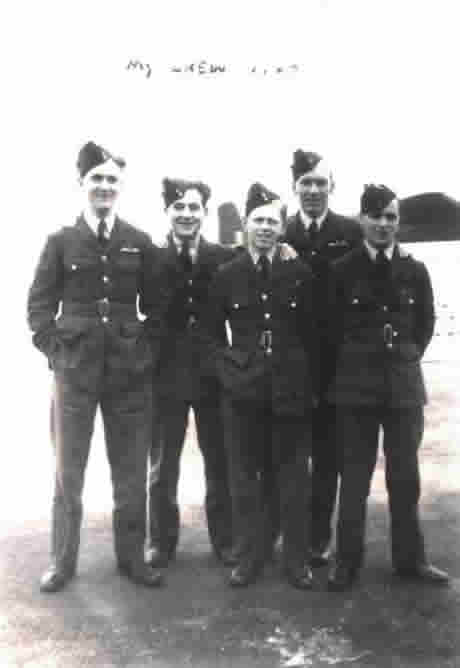
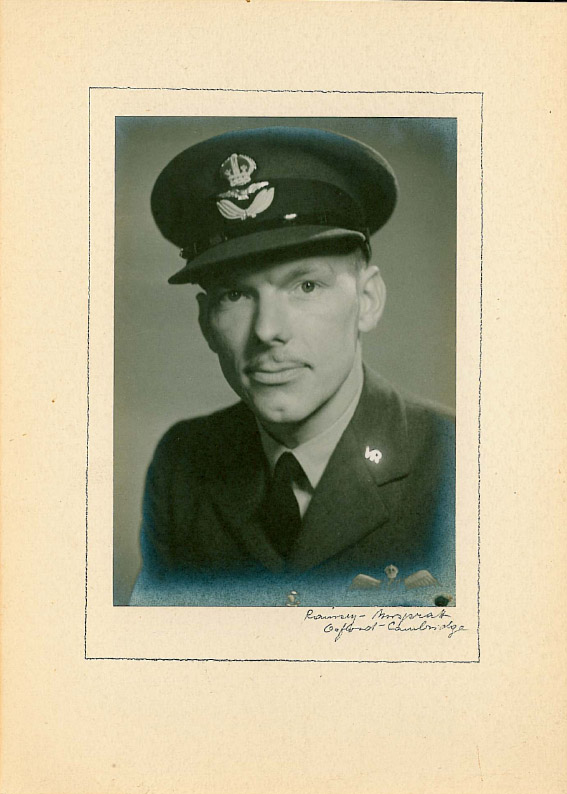


You must be logged in to post a comment.